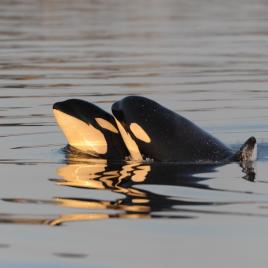
This iron-rich and silica-rich rock from Nuvvuagittuq Supracrustal Belt, Québec, Canada, contains tubular and filamentous microfossils.
(Image by Dominic Papineau)
The earliest living organisms on Earth are thought to have lived in hydrothermal vents underwater. Researchers analyzed jasper rocks from the Nuvvuagittuq belt in Quebec that may have originated from such submarine vents, and found evidence of structures similar to other bacterial life in Earth’s early oceans. Authors say there are additional signs of biological activity in these rocks – such as iron oxide granules, which are usually indicative of oxidized biomasses. The Nuvvuagittuq rocks are estimated to be between 3,770 million to 4,290 million years old, which would make the microorganisms living inside them some of the earliest life observed on Earth.
Authors:
Matthew S. Dodd, Dominic Papineau, Tor Grenne, John F. Slack, Martin Rittner, Franco Pirajno, Jonathan O’Neil & Crispin T. S. Little
Canadian author:
Jonathan O’Neil, Department of Earth and Environmental Sciences, University of Ottawa, ON, Email: Jonathan.ONeil@uottawa.ca
Original paper published in Nature on March 1, 2017.



